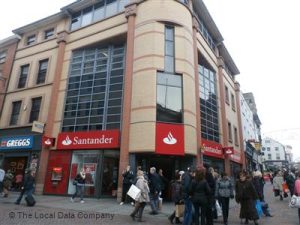Manchester economy predicted to remain resilient in 2022

A strong professional service sector and a world-class university will mean that Manchester will be home to one of the fastest rates of employment growth in the UK by the end of 2022, according to the latest business report by national law firm Irwin Mitchell.
The UK Powerhouse study, which has been produced by the Centre for Economics & Business Research (Cebr), analyses 50 of the largest local economies by employment and GVA growth.
In the latest report, while Manchester is predicted to occupy eighth position next year in the league table for the number of people in work, it means it will fall from seventh spot in the 2021 rankings.
Manchester’s 2022 position is due to a 2.2% year-on-year growth equivalent to 11,100 newly filled positions.
Despite a strong performance by Manchester and other large cities such as Leeds, Birmingham, Cardiff and Edinburgh, smaller locations in the North, including Stockport and Preston, appear in the bottom 10 out of the 50 locations.
The report says that the city of Manchester’s relatively strong performance is helped by its labour market composition which has made it relatively robust to disruptions caused by public health measures.
Retail trade makes up a smaller share of employment than in other cities in the UK, at 11.9% in 2019 and while Manchester’s labour market employ an above average share of hospitality workers, the report says they make up only a minor portion of the city’s overall labour force, which is characterised by professional services.
It adds that the University of Manchester is another large factor for the local economy, as it has established itself as one of the country’s leading institutions of higher education.
Although Manchester is predicted to have a relatively strong 2022, there are signs of a deepening North-South divide.
Hotspots such as Oxford, Cambridge and Milton Keynes are predicted to see year-on-year GVA growth of 3.3% by the end of 2022. This will result in a total of £1.8bn being added to their combined economic output.
This economic growth represents the same increase in output seen in Manchester, Leeds, Sheffield, York and Liverpool combined.
Hannah Clipston, partner at Irwin Mitchell, said: “The UK’s economy has undergone significant change over the last two years and this report highlights that the recovery is unlikely to be linear or even uniform.
“Over the next 12 months our report predicts that manufacturing’s output will grow by 3.5% whilst for hospitality it will grow by 35%. This has a huge impact on the variations that we are seeing in terms of growth in different locations and should be considered by the Government as it looks to level up and tackle the North-South divide.”
Irwin Mitchell’s report also examines to what extent disruption in the economy leads to innovation. Here the study reveals that North West region came eighth behind areas such as the South East, South West and Yorkshire.
Hannah added: “Businesses have been incredibly resilient over the last couple of years and have faced many disruptors including COVID, labour shortages, supply chain issues and high fuel costs.
“Our latest study recommends that irrespective of the sector they’re in, organisations should be adopting technology more quickly and adapting to the UK’s new status after Brexit.
“All of this will require a shift in approach and for innovation to be celebrated and nurtured more than it is currently. It’s vital that businesses are encouraged to follow this path and receive the right level of support in order to help them succeed.”
Other North West towns and cities fare differently when looking at GVA growth.
In the 2021 rankings, Preston sits in fourth spot in the UK, with £4.2bn of GVA growth, equivalent to 8.5%, Liverpool is in 12th slot with £12.6bn, representing 7.5% growth, while Warrington is 13th, on £7.2bn, also 7.5%.
However, predictions for 2022 show Preston and Liverpool have fallen out of the top placings, while Warrington has moved up to ninth, with a GVA level of £7.4bn, representing just three per cent growth.




